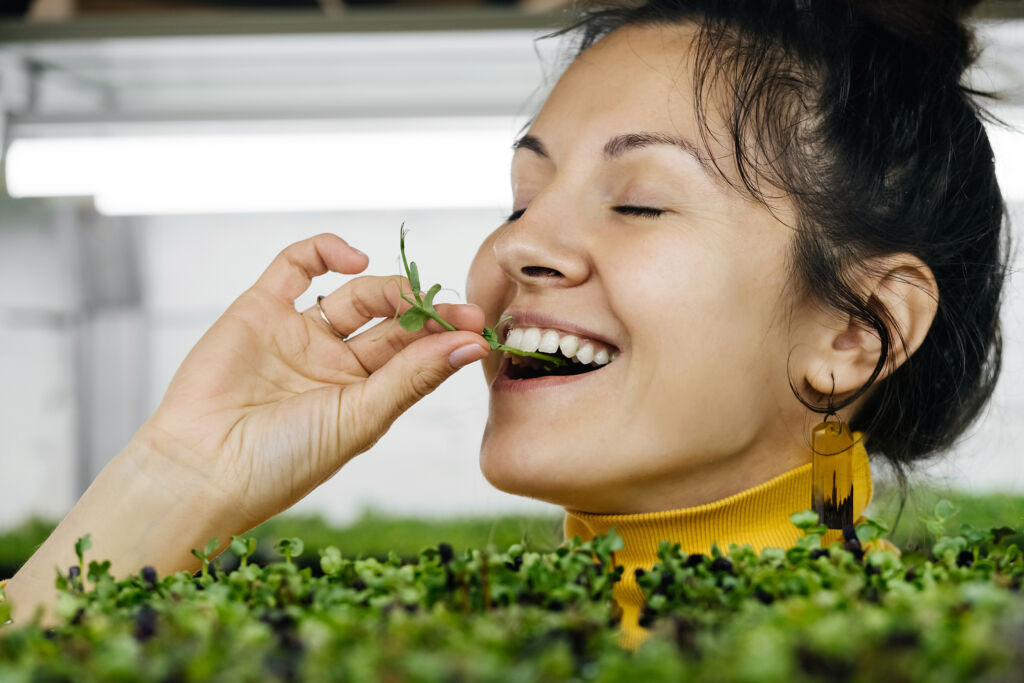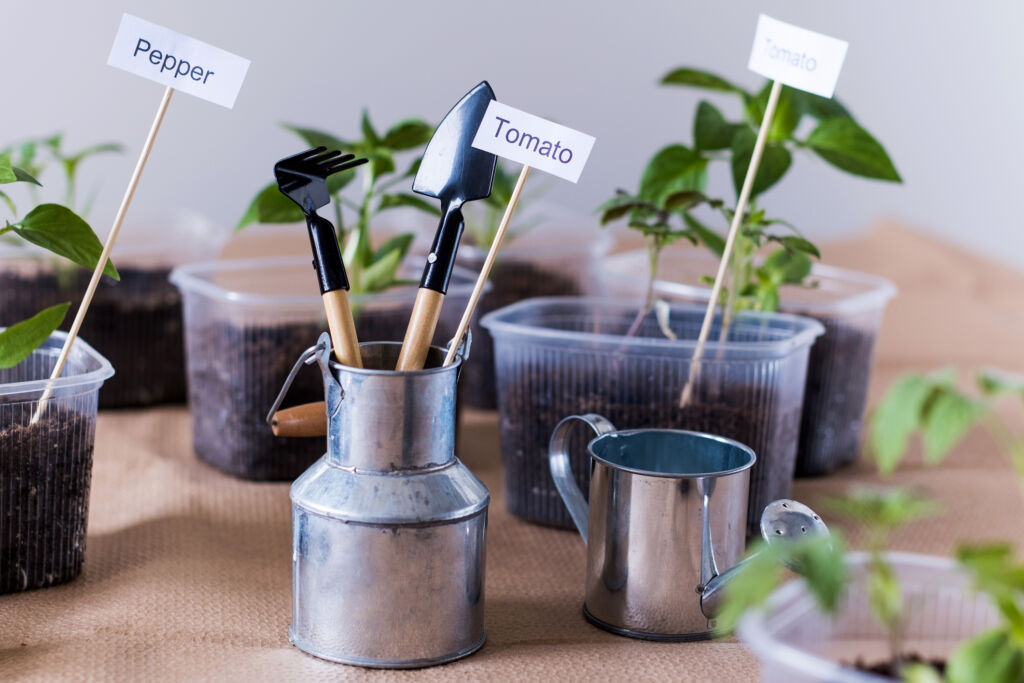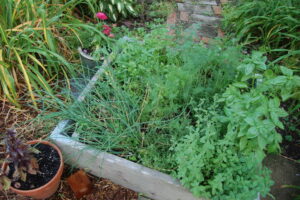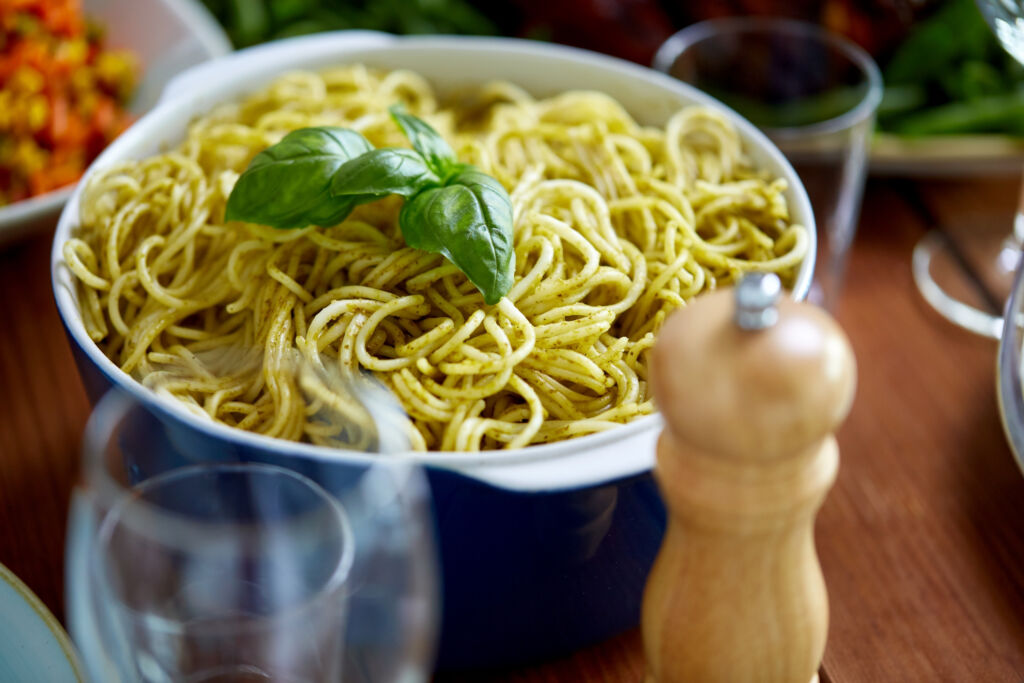HousePlantJoy is supported by our audience. When you purchase through one of our links, we may earn a small affiliate commission. As an Amazon Associate I earn from qualifying purchases. Your cost is not affected.
==================
Growing Edible Houseplants Indoors
It’s interesting and good to know that we can have edible houseplants within our homes. Growing these plants takes care of our tendencies and desires to raise and nourish. Also, it allows us to have a harvest indoors. Besides, getting houseplants you can eat makes it possible to consume safe edibles. They are often herbs, fruits, and vegetables free of herbicides and pesticides. Aside from that, these plants taste great and come with nutritional benefits. So it’s clear why many who think about their health and the environment have these at home.
In this article, we’re going to check a few tasty household plants that gardeners grow in pots. Many plantsmen even consider these garden companions as their preferred or favorites. We’ll take a look at what makes them fascinating and how to grow them. Hence, if you’re searching for a hobby to pursue or want to have an indoor garden, know more about these plants.
Benefits Of Having Edible Houseplants
It’s quite helpful to have houseplants you can eat. These plants provide adequate vitamins, minerals, and more to the body when consumed. Yet, aside from being nutritious, they also have other valuable attributes. For instance, another advantage of keeping them is their benefit to the environment. They can draw beneficial insects such as ladybugs and mealybug destroyers. Having them controls the number of pests indoors. These garden companions, like all plants, absorb and convert carbon dioxide to oxygen. They even purify the atmosphere by detoxifying or degrading air pollutants. It then becomes safer to use products with chemical compounds such as benzene. So it’s sensible to have a few of these within our homes.
Usually, these plants look attractive too. Because of that, they make excellent decorative elements indoors. Being around and looking at them enhances mood. They can reduce tiredness, stress, and anxiety while boosting mental and physical performance. In different rooms at home, they can contribute to a lot of good things. Hence, it comes as no surprise why it’s common for people from all walks of life to have comestible indoor plants.
Common Yet Treasured Edible Houseplants
People have herbs, fruits, and veggies inside their houses due to a lot of reasons. As pointed out, these plants are ornamental in their structure and foliage. Yet another one of the main purposes for this is that growing houseplants you can eat is cheap and healthy. With the way the environment and global economy are now, it’s reasonable to be resourceful. Home design and food costs are getting expensive. The prices of crops continue going up due to the high demand for them too. It’s safer to have homegrown plants too. Take note that the current industrial agricultural practices depend on pesticide usage. With these, there’s no doubt about why homeowners have plants and raise crops at home.
Here are a few examples of the usual yet special comestible plants folks take care of indoors. There are more of these but we’ll only mention some of the most notable ones.
Herbs As Edible Houseplants
Basil
These are houseplants you can eat since they are healthy and safe to eat. Belonging to the mint family, these fragrant plants often are about 1 to 2 feet high and are consumable. Their large, glossy, and oval green foliage is aromatic and comes with spicy overtones. Plus these deliver traces of calcium and potassium. These are for better bones, nerve and muscle function, and blood clotting. They also have eugenol and limonene for their smell. Other than the scent, these elements have anti-bacterial and anti-inflammatory properties too. The plants also contain antioxidants such as lutein and zeaxanthin for sunlight protection. So it’s clear why this herb appeals to and is the culinary herb for a lot of people.
Requiring about six hours of sunlight daily, they only need weekly watering to get the soil moist. It’s great indoors since it can also manage very low temperatures like 32 Fahrenheit. It only needs balanced fertilizer every 4 to 6 weeks or so to thrive inside and it’s easy to prune. Hence, it’s an excellent edible plant to have around.
Chives
What’s fascinating about these edible houseplants is that all their parts are consumable. They are often described as perennial herbs that are about 1 foot high. They come with tall and slender yet hollow green leaves. Plus, they produce tiny purplish clusters of blossoms. Their soft or delicate texture with their flavor resembles onions. With them, you get low-calorie food with plenty of vitamin K and folate for blood and bone health. They also contain vitamin A which has antioxidant properties for cancer prevention. So owners appreciate and recommend them for their look, taste, and nutritional value.
These are flowering houseplants you can eat only with proper care. But, with the right measures, they can grow to be excellent culinary herbs. They don’t grow fast but, with care, the seeds often germinate after 3 weeks. Planting them in springtime indoors is best with full and about 6 hours of bright sunshine. Put them in a pebble tray for humidity and a well-draining pot and water them every 2 to 3 days. Giving them diluted or half-strength, water-soluble fertilizer once or twice per month helps. Apply plant food with more phosphorus and equal parts nitrogen and potassium or a 5-10-5 ratio. Thus it isn’t that challenging to take care of this consumable angiosperm.
Cilantro
These are green and leafy herbs that people treat as common edible houseplants. Today, many Indian, Chinese, Mediterranean, and Mexican dishes have them. Some use them as substitutes for parsley and they look like it too. Also, people eat them as a whole but prefer their foliage and stems the most. With them, you get a combination of fresh earthy tastes and citrus flavors in your mouth. Plus, you get plants with essential oils and anti-inflammatory plus antibiotic properties. Still, they provide low-sodium, cholesterol-free, and fat-free food. Thus it’s typical to see potted plants with these herbs in kitchens and dining areas.
Even though they are houseplants you can eat, they are annual plants. Hence, they perish after flowing. But it’s also unique because it’s a self-propagating plant. Growing in the summer, they produce and spread seeds by themselves. They need plenty or about 6 hours of sunshine to thrive. They don’t demand a lot of water and do not do well in damp areas. Once a week, they need fertilizer and grow well with nitrogen-rich plant food. Since they grow fast, get overcrowded, and are in demand, they can also be profitable plants to grow.
Vegetable Houseplants You Can Eat
Carrots
These are biennial houseplants or root vegetables that only live for about two years. Because they are adaptable plants and excellent sources of vitamin A, many like them. Some even propose including them as regular, edible houseplants. They are orange taproots with a leafy top that take 3 to 4 months to become mature. Once matured, they are ready for consumption. It only requires pulling them off the ground to gather them. Once prepared, they give an earthy yet sweet smell and flavor. Medium-sized variants can already cover most people’s vitamin A daily needs. Plus, they have low calories, moderate or high carbs, low protein, and plenty of fiber. So it’s great to have these as houseplants you can eat.
People suggest placing them in 1-foot deep and 4-inch wide containers. There must be about 2 cm space between seeds too. Once the seeds are in the soil, hydrate them with an inch of water weekly until they mature. It becomes 2 inches when the vegetables start to grow already. Expose them to more than 5 hours of sunlight and fertilize them every 3 to 4 weeks. Use a fertilizer that has more potassium and phosphorus for better root growth. With the right care, you can display them as decorative plants that you can eat anytime in windowed rooms.
Lettuce
These plants are some of the best edible houseplants to have. It’s because of their favorable look and nutritional value. These usually have short stems with fibrous roots and large consumable leaves. Common varieties have green foliage. But it’s interesting to note that other types have leaves with red and purple shades. All variants often have crispy foliage with some sweetness and bitterness. As for their nutrition, they don’t have cholesterol and fat, plus only have low traces of sodium. They come with small amounts of iron, vitamin A, and fiber too. This means that they are good for blood quality, inflammation, and digestion. So it’s not surprising why homeowners who love salad have these plants inside.
To grow these houseplants you can eat, you need containers that have good drainage. Watering twice a week only if an inch deep of the soil becomes dry is essential. Avoid overwatering to prevent leaves from wilting, roots from rotting, molds, and aphids. These plants demand light and so a short sunlight exposure is not enough. During wintertime, put them underneath grow lights for almost an entire day. Every 2 weeks, they may need to have balanced and diluted fertilizer sprayed or poured on them. Even if it may be challenging to grow these plants, they can thrive in small and cool areas. Thus have these if you want edible plants during wintertime.
Fruit-Bearing Edible Houseplants
Tomatoes
These fruits are quite rich in vitamins A and C, plus they are free of fat and cholesterol. Other than that, they have low calories and sodium. So it’s no wonder why people include them as edible houseplants that are good for the heart. Aside from being healthy, they are also beautiful plants to have around. When blooming, they display clusters of yellow flowers. As for the fruits, they taste sweet and tangy at the same time. People often use them in many Italian dishes such as pizza and pasta. Still, these fruits are present in international appetizers. So, for many reasons, tomatoes are worth taking care of.
To make these the perfect houseplants you can eat, you must give them hours of sunlight and enough water. 8 to 10 hours of sunshine is plenty already with an inch or more of water per week. With this, putting the containers that have them near windows helps a lot. It also makes sense to check the soil for dampness. It needs good drainage, diluted fertilizer, and some moisture too. What’s important is that they get plenty of nutrients to put forth quality fruits.
Capsicum
If you’re fond of spicy things, try having these edible houseplants. They come in various attractive colors such as green, yellow, and red. Also, they often contain high traces of vitamin C and beta-carotene. Hence, they are good for enhancing immunity, wound healing, and vision. Red and yellow types have a sense of sweetness in them while green ones are usually a bit bitter. Bell peppers are flavorful but chilies are usually spicy. Because of their interesting taste and nutritional value, they make excellent food. With low calories, sodium, and fat, they are good for dieting and weight management. They don’t even have gluten and have reasonable traces of fiber. With these attributes, they are great for any home where they can thrive.
Throughout the year, they can be the houseplants you can eat indoors. It’s because these plants do well when taken care of within a house. When placed near the windows to get a lot of sunshine exposure, they can manage well. They need a balanced fertilizer or the kind with plenty of nitrogen for the best pepper growth. Constant watering is also important to keep their soil moist but not too soaked. Since they are low-maintenance, attractive, and healthy, they do well as indoor plants. So taking care of them in pots is worth doing.
Other Reasons Why Edible Houseplants Are Great
These houseplants you can eat are great not only due to their look and nutritiousness. They are perfect for areas that don’t have a lot of space for an outdoor garden. Growing them until they mature in a limited space makes the modest location great. These plants are practical since they help decorate a house and make it healthy. They improve the home design and air quality without demanding a lot of space. Still, these herbaceous, vegetable, and fruit-bearing plants serve as companions. Hence, with plat life around, you never feel alone. In times of solitude, you never feel purposeless when you have these plants to take care of.
Having houseplants you can eat keeps things natural inside too. Since they filter the air, you won’t need to get air-filtration devices anymore. Also, they incorporate organic food into your diet. It means that you no longer need to have to get dietary supplements that come in the form of pills. We can say that having edible plants makes you breathe and function better. Thus it’s a good choice to start growing them.
In Closing
We’ve highlighted some of the best edible houseplants in this article. Whether you select herbs, veggies, or fruit-bearing types, choosing either is smart. After all, they are more than tasty plants. We can say that these garden friends of ours are manageable, useful, and fit all sorts of lifestyles. They are suitable for spacious and modest living spaces. As long as you can provide enough and the right lighting, water, and fertilizer, you can take care of them. Besides, other than giving mental and physical health benefits, they also provide companionship. Winter won’t be so lonely anymore with them around. So starting an indoor planting hobby or garden is an excellent idea.
We hope our write-up helped you discover and pick up an interesting hobby. Have you tried having some edible plants at home? What were they like? Thanks for reading and please tell us about your experience with planting them.








